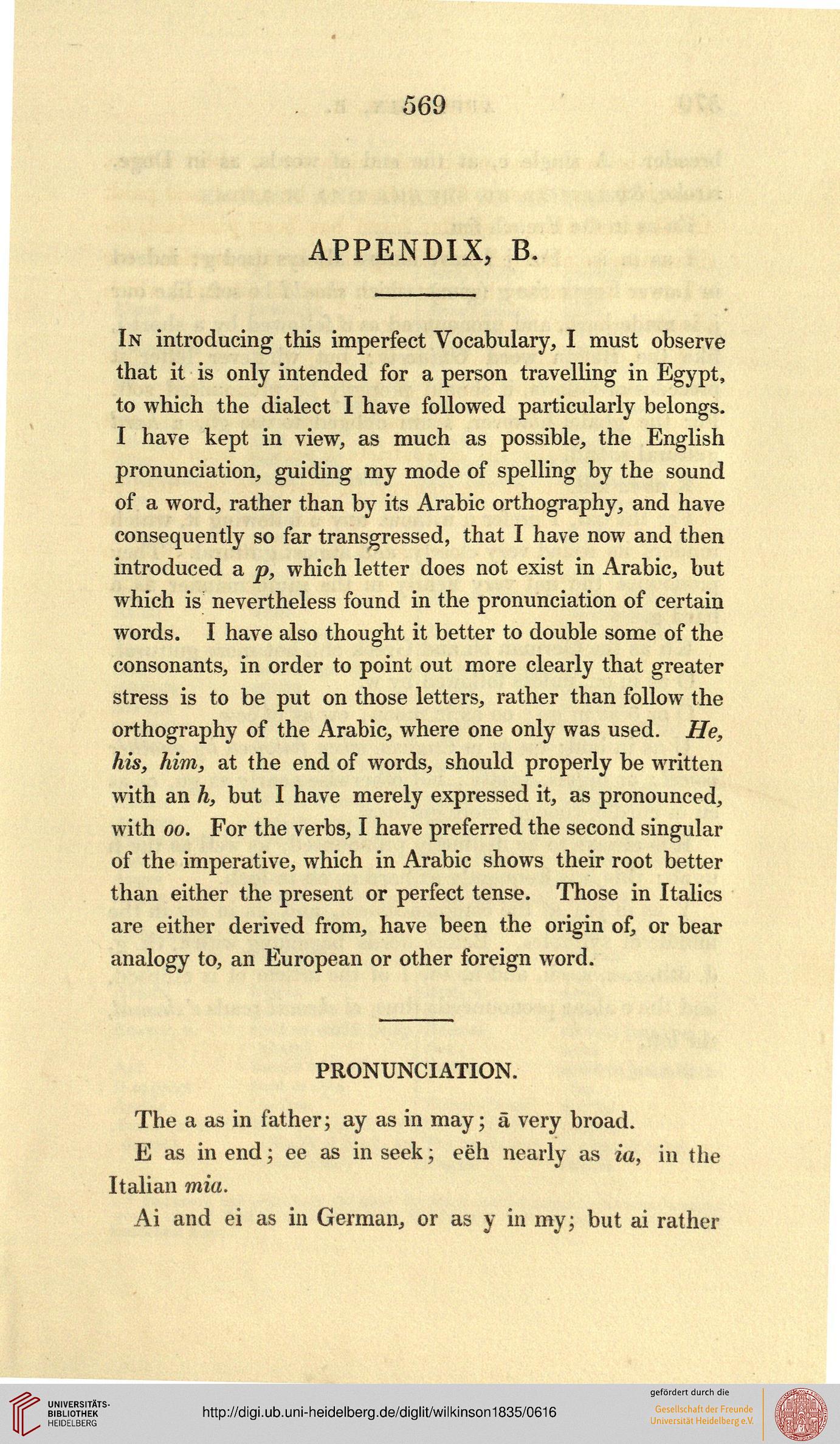560
APPENDIX, B.
In introducing this imperfect Vocabulary, I must observe
that it is only intended for a person travelling in Egypt,
to which the dialect I have followed particularly belongs.
I have kept in view, as much as possible, the English
pronunciation, guiding my mode of spelling by the sound
of a word, rather than by its Arabic orthography, and have
consequently so far transgressed, that I have now and then
introduced a p, which letter does not exist in Arabic, but
which is nevertheless found in the pronunciation of certain
words. I have also thought it better to double some of the
consonants, in order to point out more clearly that greater
stress is to be put on those letters, rather than follow the
orthography of the Arabic, where one only was used. He,
his, him, at the end of words, should properly be written
with an h, but I have merely expressed it, as pronounced,
with oo. For the verbs, I have preferred the second singular
of the imperative, which in Arabic shows their root better
than either the present or perfect tense. Those in Italics
are either derived from, have been the origin of, or bear
analogy to, an European or other foreign word.
PRONUNCIATION.
The a as in father; ay as in may; a very broad.
E as in end; ee as in seek; eeh nearly as ia, in the
Italian mia.
Ai and ei as in German, or as y in my; but ai rather
APPENDIX, B.
In introducing this imperfect Vocabulary, I must observe
that it is only intended for a person travelling in Egypt,
to which the dialect I have followed particularly belongs.
I have kept in view, as much as possible, the English
pronunciation, guiding my mode of spelling by the sound
of a word, rather than by its Arabic orthography, and have
consequently so far transgressed, that I have now and then
introduced a p, which letter does not exist in Arabic, but
which is nevertheless found in the pronunciation of certain
words. I have also thought it better to double some of the
consonants, in order to point out more clearly that greater
stress is to be put on those letters, rather than follow the
orthography of the Arabic, where one only was used. He,
his, him, at the end of words, should properly be written
with an h, but I have merely expressed it, as pronounced,
with oo. For the verbs, I have preferred the second singular
of the imperative, which in Arabic shows their root better
than either the present or perfect tense. Those in Italics
are either derived from, have been the origin of, or bear
analogy to, an European or other foreign word.
PRONUNCIATION.
The a as in father; ay as in may; a very broad.
E as in end; ee as in seek; eeh nearly as ia, in the
Italian mia.
Ai and ei as in German, or as y in my; but ai rather




